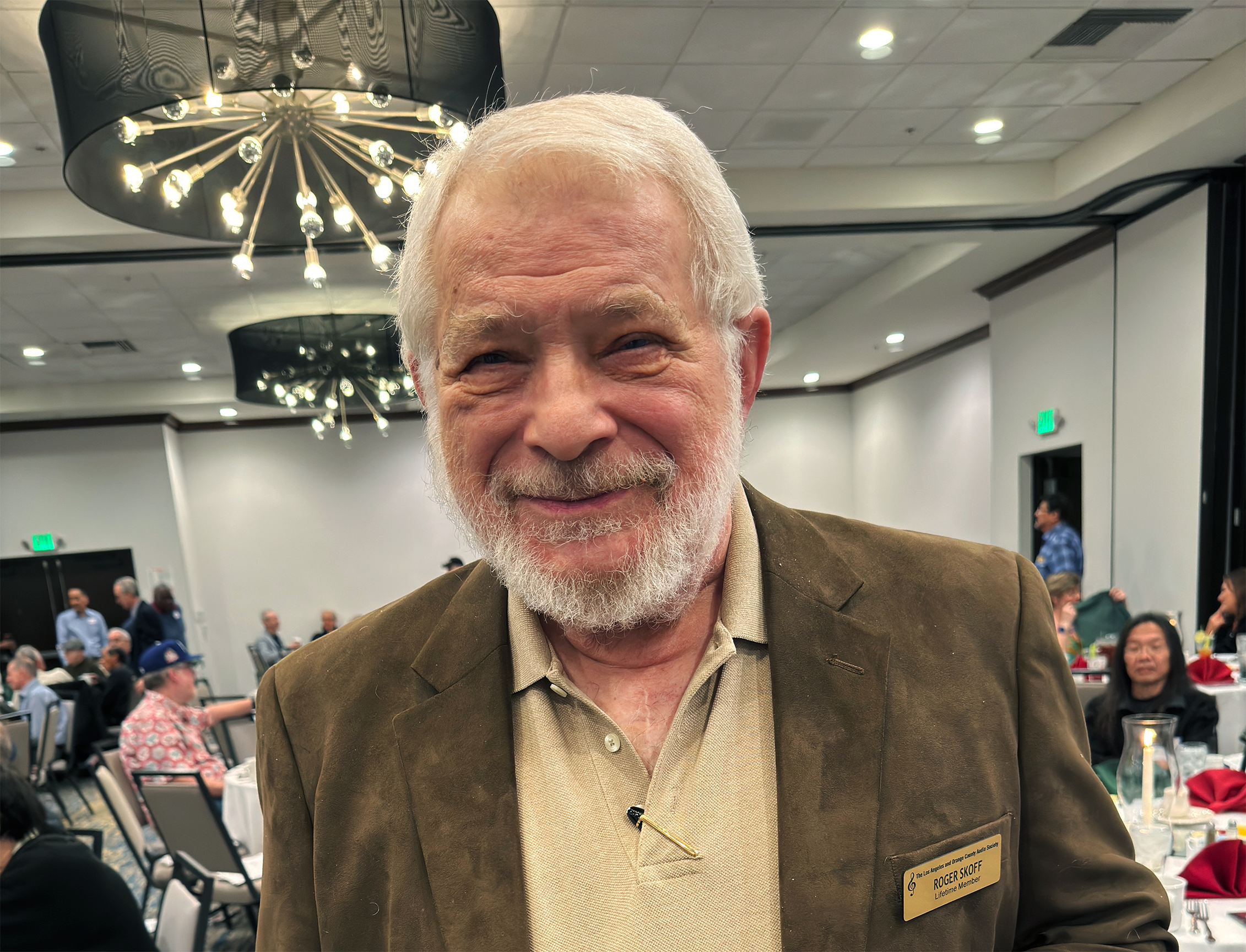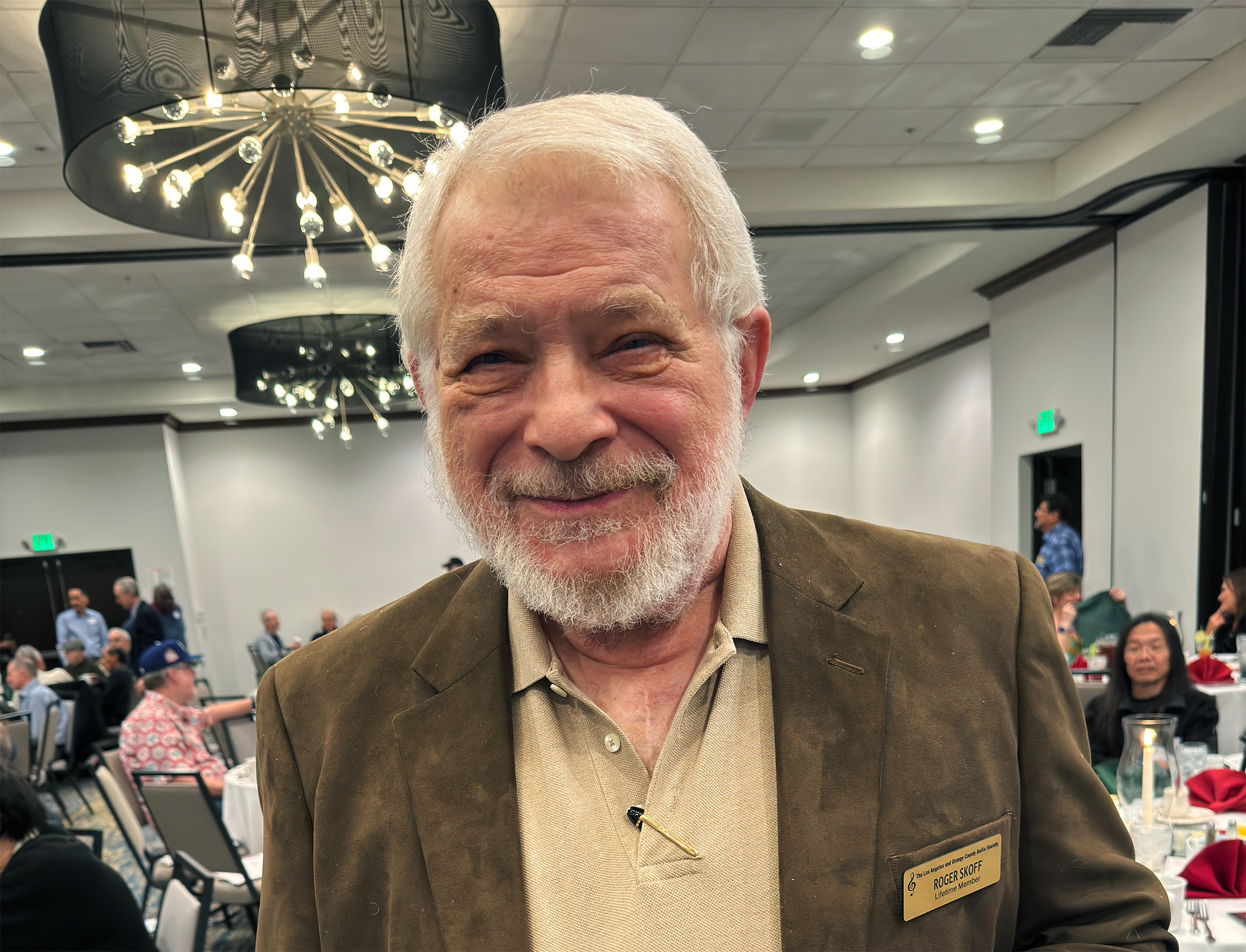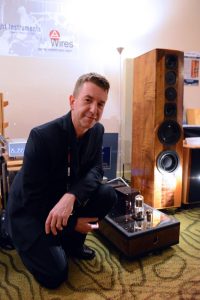Roger Skoff Comments on the State of Music and Our Hobby
Most of us will never sit on the stage at a concert of any kind. Neither will we ever have the opportunity to actually see—either by our physical presence or even through pictures—our favorite music of whatever kind being performed or recorded. Even so, if you ask practically any hard-core audiophile whether the music he's listening to on virtually any playback system—of any kind at all; of any quality at all—is a good representation of what that music really sounded like in live performance, it's almost certain that he'll give you his detailed judgment of just exactly how closely it hews (or doesn't) to the "real thing."
Nonsense.
Even a player in an orchestra―take your pick; anything from a rock group to a marching band, to a full symphony orchestra, has no idea at all what the music he's playing sounds like to anyone other than himself. Not even a soloist can accurately make that claim: The simple fact is that music sounds different in different places: A "good" seat in a concert hall doesn't sound the same as a "bad" one. That's why the "good" one is said to be "good" and the other is said to be "bad". It's also why (assuming that such a thing is even possible,) an absolutely accurately recorded and equally well-played-back recording from that "good" seat will be 100% true to the facts of the music and of the performance and may sound great, and why an equally perfectly recording and playback from the "bad" one may sound awful—and yet still " be 100% true to the facts of the music and the performance".
Imagine, if you will, a symphony orchestra recording as it's often done for "live" performances. Often just two microphones will be used, suspended from the ceiling, either (as compared to the position of the wall behind the orchestra) in-line-with the position of the conductor or, perhaps, a few feet either forward or back from it (farther from or nearer to the audience). Generally, the mics will be hung eight to twelve feet apart, and sometimes a center mic will be used between them, to be able to "highlight" a soloist or for center fill. For the moment, let's disregard the pickup pattern of the microphones—anything from omnidirectional to bi-directional to super- or even hyper-cardioid may be selected, depending on the desired ratio of direct sound from the performers or instruments to reflected or ambient information from the hall, but for our present purposes, which one or combination may be chosen simply doesn't matter.
The reason it doesn't matter is, of course, that, while each of the various pickup patterns that might be chosen will impart its own characteristic sound or "acoustic positioning" on the recording, none of them either will be or should be accurate.
Do you really want to have a recording (of anything other circus trapeze music) that sounds like you're listening to it suspended several feet above the orchestra? Or, for that matter, with your ears eight to twelve feet apart? (No, I'm not going to say anything about that possible third mic.)
With "studio", or in-the-same-concert-hall-but-with-no-audience" recordings of symphonic music, the mic techniques may be similar, using just two three microphones, recording to just two or three tape or digital channels. Or, in the grand tradition of wretched excess that seems to accompany any endeavor where vast amounts of equipment are available and no one wants any of it to "go to waste", there may be a microphone for every soloist, every instrument or instrumental grouping (the strings, the brass, the woodwinds, etc., or even one mic for each individual drum or triangle), and even more mics placed out, away from the orchestra (into the hall), for "ambience. And it may all be recorded onto 16 or 24 channels for later mixdown, equalization, and "mastering. (Interestingly, when a recording is done in an actual but empty concert hall, all kinds of acoustical treatments may be used to simulate the effect of all those missing human bodies. People make excellent acoustical damping material, and if there are none present, it can clearly be heard in the sound of the recording.)
Quite obviously, a recording done with all that stuff, simply isn't going to sound—no matter how thrilling it may turn out to be—anything at all (except in the grossest terms of notes, pauses, and kind and number of performers) like what any one person—even the conductor or the recording engineer—heard at the session or sessions that went into making it.
And does that matter? I don't think so. Does it really have to sound like the real thing? What IS "the real thing"? And what if there never was one?
Especially in the field of "Pop" or "Rock" music recording, it's quite common for all of the performers never to appear together at the same venue at the same time. When I was consulting to Motown, I remember more than a few occasions where Berry Gordy, Jr.—not only the company's principal owner, but one of its most major creative forces—would sit there with his staff and a bunch of hand-held cassette recorders, each holding a copy of one instrumental or vocal "track" of a present recording "work in progress" and, by playing this one, and then starting that one, and then those others, and recording the sound of all of them to one more machine, would come up with a sonic "instruction sheet" for his engineers and producers for assembling what might turn out to be Motown's next big hit.
That's how—perhaps not with the kind of session I just described, but at least with everything recorded to separate tracks at separate times—much of today's pop and rock music is recorded: First the rhythm players "lay down some tracks", then they leave and more players—listening to that first track through headphones—come in and add their bit. Then the next group comes in, listens to what's already there, records their own track, and leaves. And so on, until eventually a vocalist may come in and, singing along with a rough mixdown of the work of everybody else, do his or her part, leaving all of the various tracks to be assembled, "sweetened" balanced, and made into what everybody hopes will be a million-seller.
How then, when there's no real performance, can a recording sound like "the real thing"?
It's simple. Just as, when we watch a movie, we know that the characters and actions we see aren't real, but so long as they fit into our preconceptions of what such things would be if they were real, we accept them and "go along for the ride", we do the same for the music we hear: We have expectations of what music ought to sound like and we judge the realism and "fidelity" of what we hear by how closely it matches our preconceptions: If it sounds real, it is real; if it doesn't, it isn't.
Or, to put it differently, what we know of what music sounds like is what gives us our expectations of what music ought to sound like, and when we hear something new, if it jibes with our preconceptions, we declare it to be believable and accept it as "real" and if it doesn't, we complain that what we're hearing must have been either badly recorded or badly played-back, and we reject it as not being real.
What we have heard determines what we can accept and what we will reject, and each time we hear something, either "realistic-sounding" or not, it reinforces our preconceptions and acts to determine what we will think of the next thing we hear. That's how, even more than a century ago, people could listen to early Edison recordings and, just as audiophiles do with today's latest and greatest, declare it to be indistinguishable from the sound of a live performance.
It's the world's greatest tail-chaser! Ain't it fun?






































